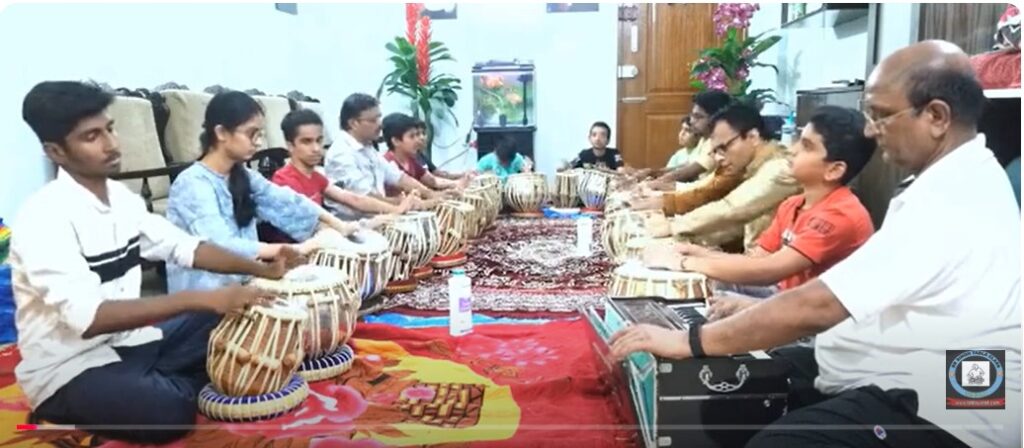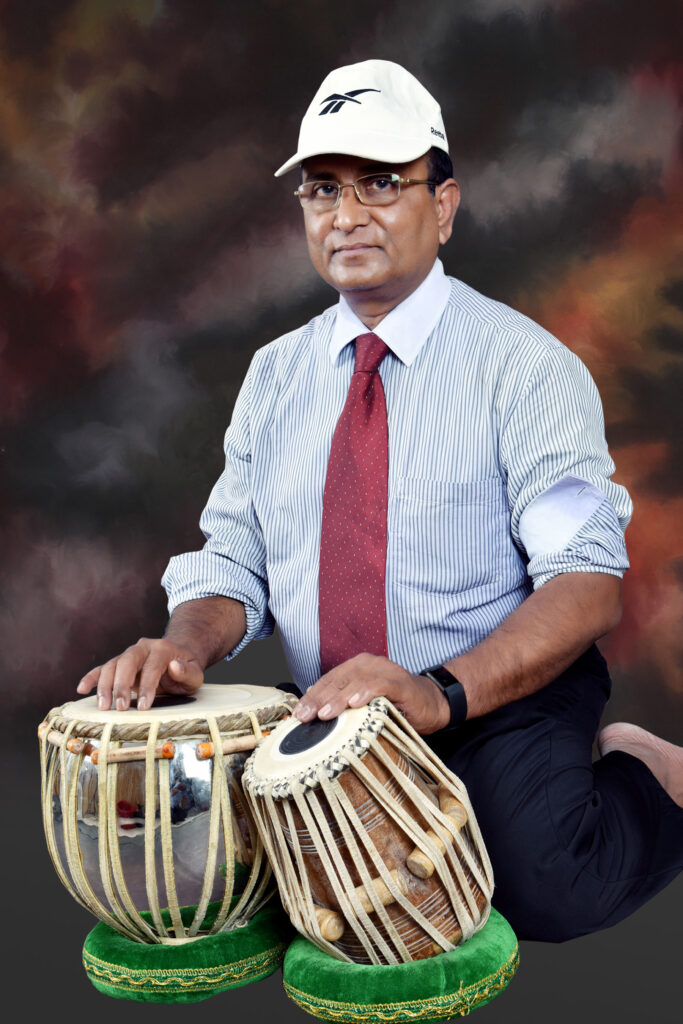The tabla is more than just a musical instrument—it is a gateway to mindfulness, a full-body workout, and even a form of therapy. Playing the tabla is not only an artistic pursuit but also a deeply meditative experience that engages the mind and body in profound ways. Over the years, many musicians and researchers have discovered that tabla playing can help alleviate stress, improve cognitive function, and even aid in the treatment of neurological disorders.
In this blog, we’ll explore how playing the tabla acts as a powerful form of meditation, an effective physical exercise, and a natural therapy for brain-related ailments.
Tabla as a Form of Meditation
In Indian classical music, rhythm is often seen as a sacred force, and the tabla is one of the most meditative percussion instruments in the world. Playing the tabla requires deep concentration, precise hand coordination, and rhythmic repetition, all of which naturally induce a state of mindfulness.
- Focus and Presence: When playing a taal (rhythmic cycle), a tabla player must stay completely present in the moment. The repetitive yet evolving nature of tabla patterns allows the mind to enter a state similar to deep meditation.
- Breath and Rhythm Synchronization: Many seasoned tabla players unconsciously synchronize their breathing with the rhythm of their playing, creating a calming effect similar to traditional meditation techniques.
- Flow State: Playing tabla can lead to a state of “flow,” where the musician feels completely immersed in the rhythm, losing track of time and worries. This flow state is known to reduce stress and anxiety.
Famous tabla maestros like Ustad S.B Singh and Pandit Anindo Chatterjee have often described how tabla playing takes them into a deeply spiritual and meditative state. In fact, many musicians consider their daily riyaaz (practice) as a form of self-exploration and mindfulness.
Tabla as a Great Physical Exercise
Though it may seem like a simple act of drumming, playing the tabla is actually a full-fledged workout for the hands, arms, and even the brain! It requires immense stamina, agility, and endurance, making it a great physical exercise for people of all ages.
- Hand and Finger Strength: Tabla strokes (bols) like Dha, Na, and Tin require controlled finger movements, which strengthen the muscles in the hands, wrists, and forearms.
- Improved Coordination: Playing tabla requires each hand to move independently, which enhances hand-eye coordination and motor skills. This makes it a great exercise for children and adults alike.
- Posture and Stamina: Sitting cross-legged for long periods while maintaining a straight posture helps strengthen the back and core muscles, improving overall body stability.
- Cardiovascular Benefits: Fast-paced tabla playing, especially during complex compositions or solos, increases heart rate, which can improve circulation and cardiovascular health.
Many tabla players have reported increased endurance and flexibility in their hands after years of regular practice. Some even compare playing tabla to activities like drumming workouts or yoga due to its positive effects on both mind and body.
Tabla and Brain Health: A Therapy for Neurological Disorders
Scientific studies have shown that playing percussion instruments like tabla can stimulate the brain in unique ways, making it beneficial for people with brain-related ailments such as Parkinson’s disease, Alzheimer’s, and stroke recovery.
- Neuroplasticity and Brain Activation: Playing tabla activates both hemispheres of the brain. The rhythmic nature of tabla playing improves neural connections, boosting memory and cognitive function.
- Stress Reduction and Mental Well-being: Rhythm therapy has been used in music therapy programs to help patients with anxiety, depression, and PTSD. The vibrations from the tabla create a calming effect that reduces stress hormones like cortisol.
- Helps with Dyslexia and ADHD: Research suggests that children with learning disabilities like dyslexia or ADHD benefit from rhythmic training. Tabla practice enhances focus, patience, and auditory processing skills.
- Rehabilitation for Stroke Patients: Since tabla playing requires controlled hand movements, it can be used as a rehabilitation exercise for stroke patients, helping them regain motor skills.
Real-Life Healing Stories
Many musicians and therapists have recognized the healing power of tabla. A study conducted by neurologists in India found that patients with Parkinson’s disease who played the tabla regularly showed improved motor control and reduced tremors. Similarly, music therapy programs in the US and UK have begun incorporating tabla rhythms to help individuals with mental health conditions.
Conclusion: Embrace the Rhythmic Therapy of Tabla
Playing the tabla is much more than an artistic pursuit—it is a holistic exercise for the mind, body, and soul. Whether you play for meditation, fitness, or mental well-being, the tabla offers countless benefits that go beyond music.
If you’re looking for a creative way to de-stress, improve focus, and stay physically active, consider learning the tabla. Not only will it sharpen your mind and strengthen your body, but it will also introduce you to the rich cultural heritage of Indian rhythm.
🎶 What do you think about the healing power of the tabla? Have you ever experienced a meditative or therapeutic effect while playing? Share your thoughts in the comments! 🎶

https://www.facebook.com/sbsinghtablaguru
https://www.linkedin.com/in/shree-singh-bb483059



